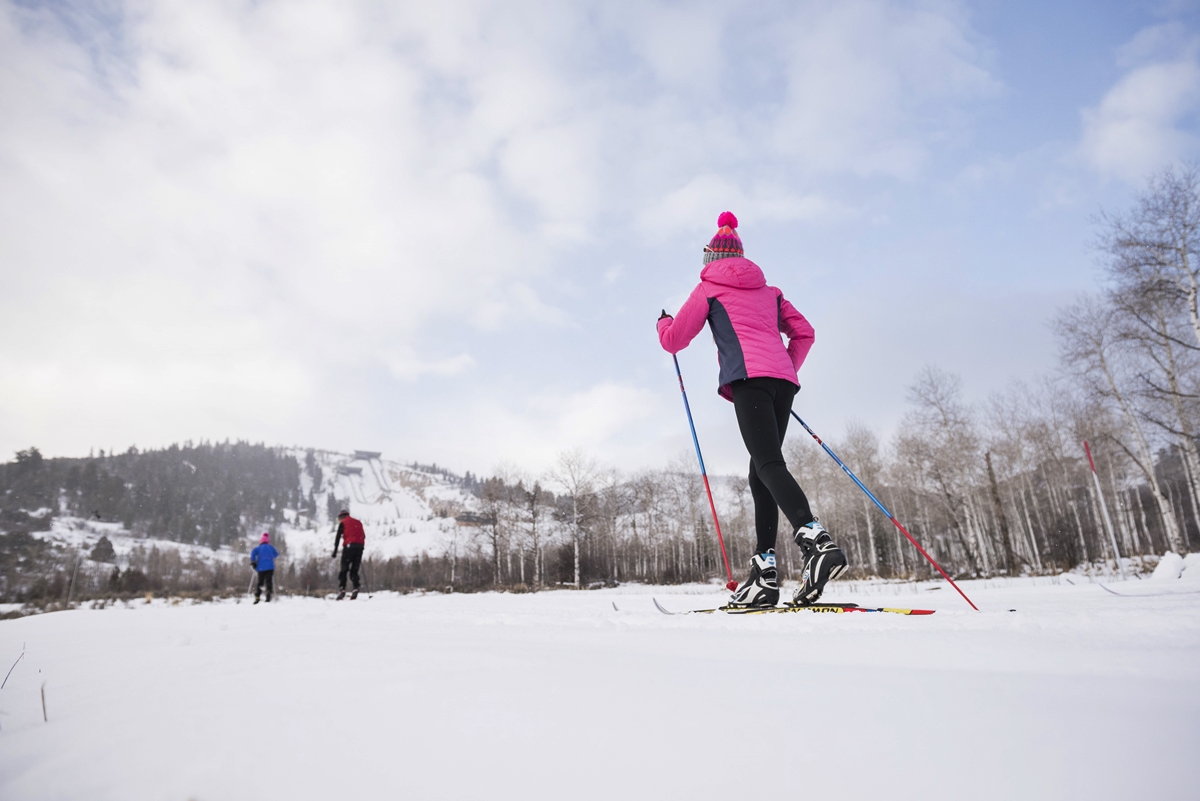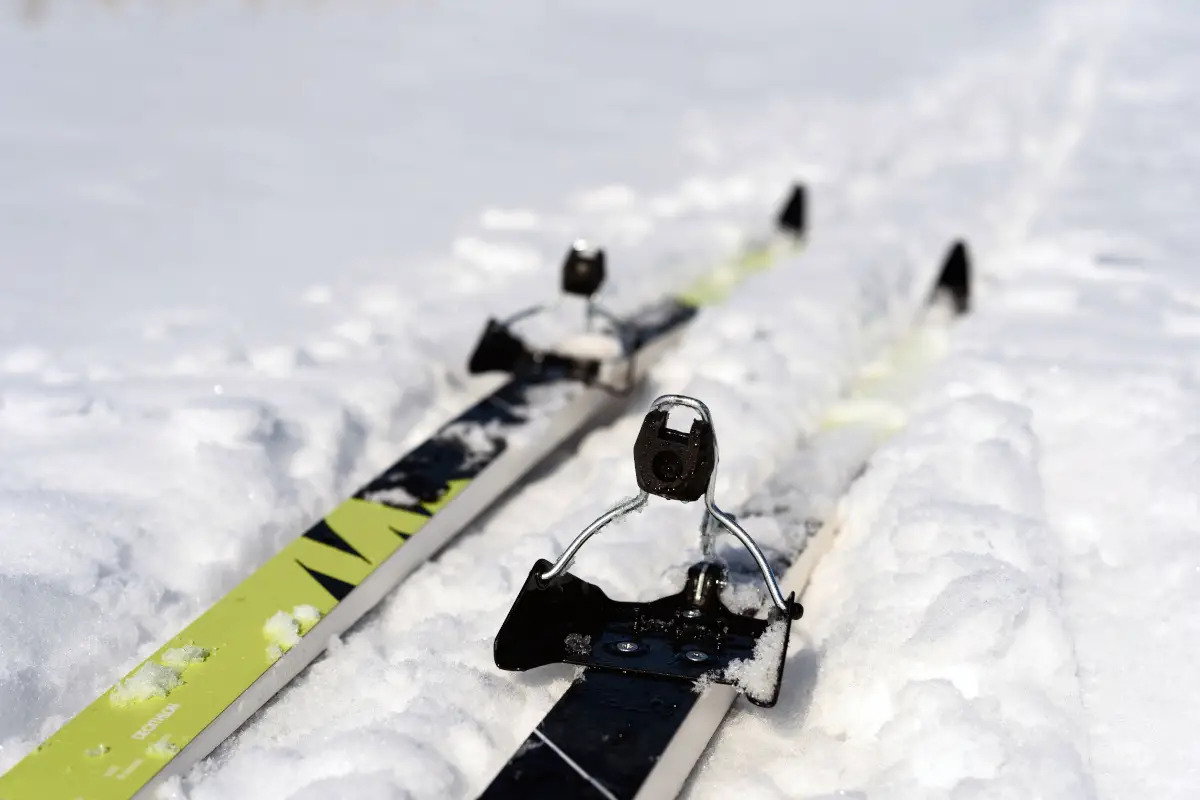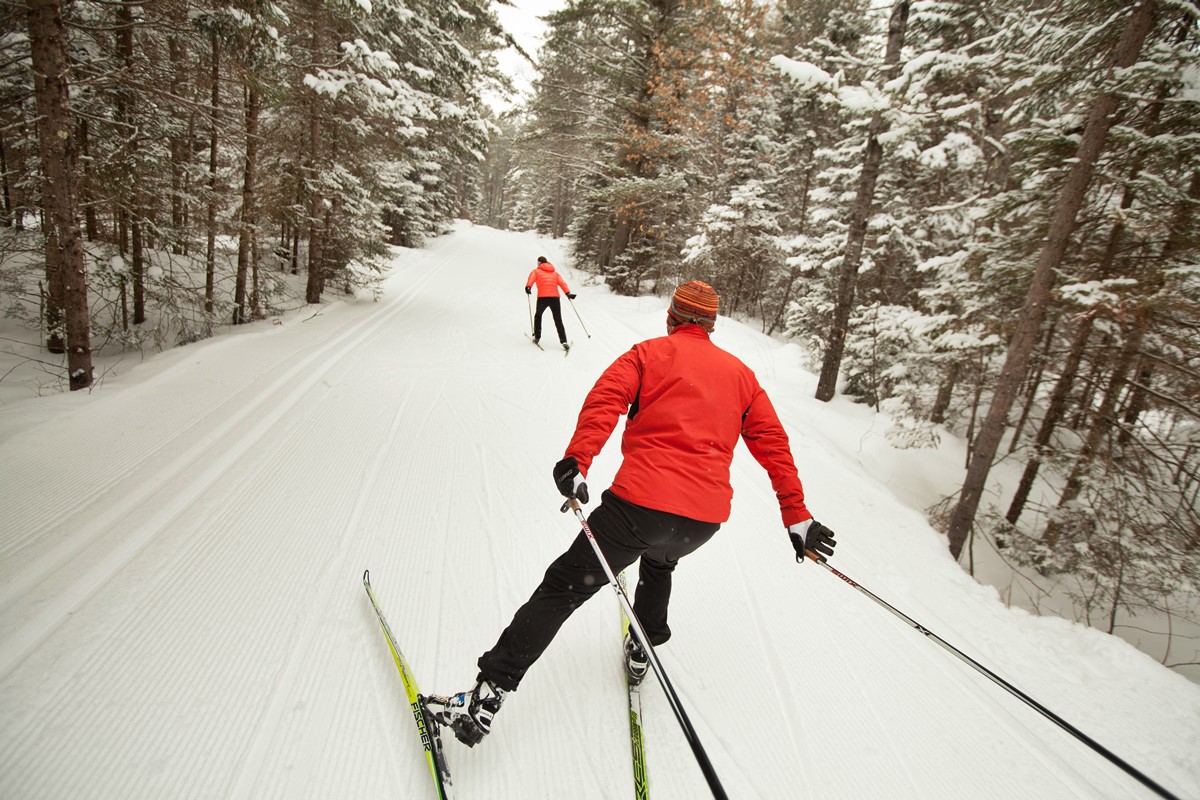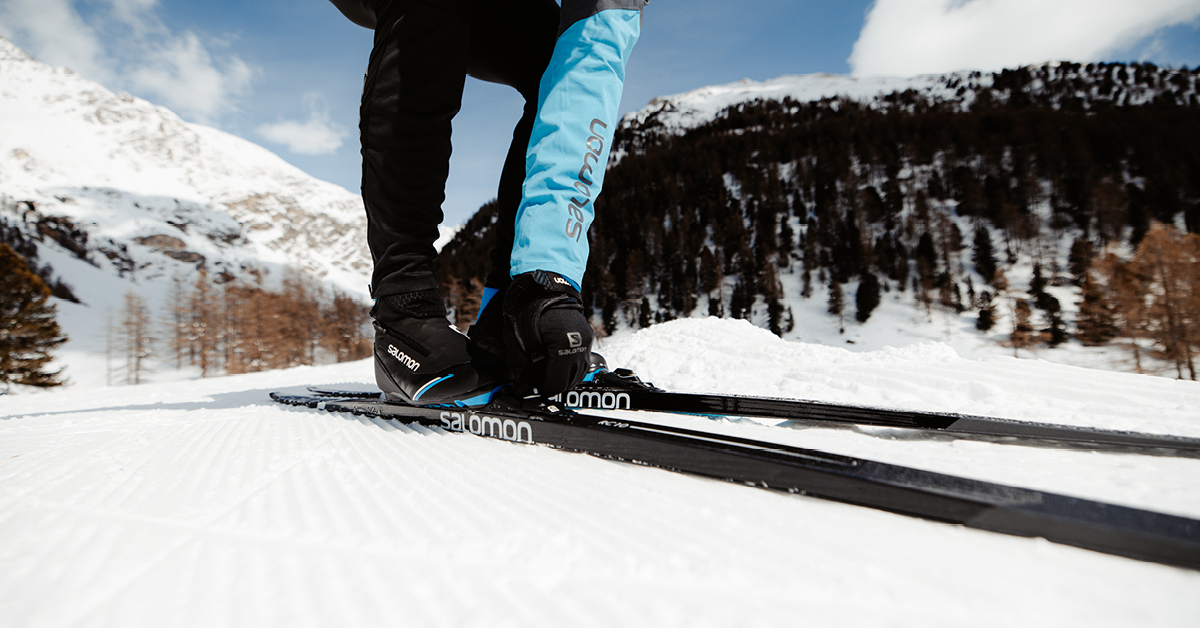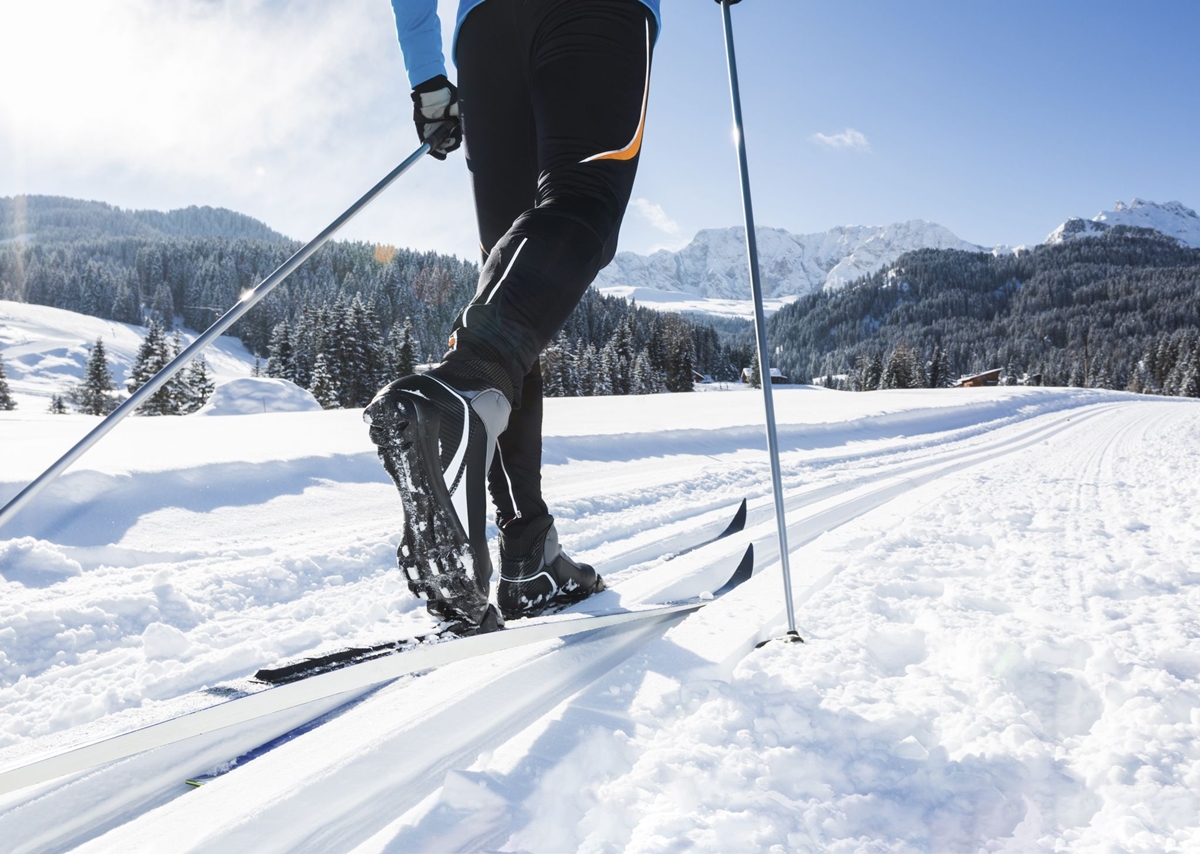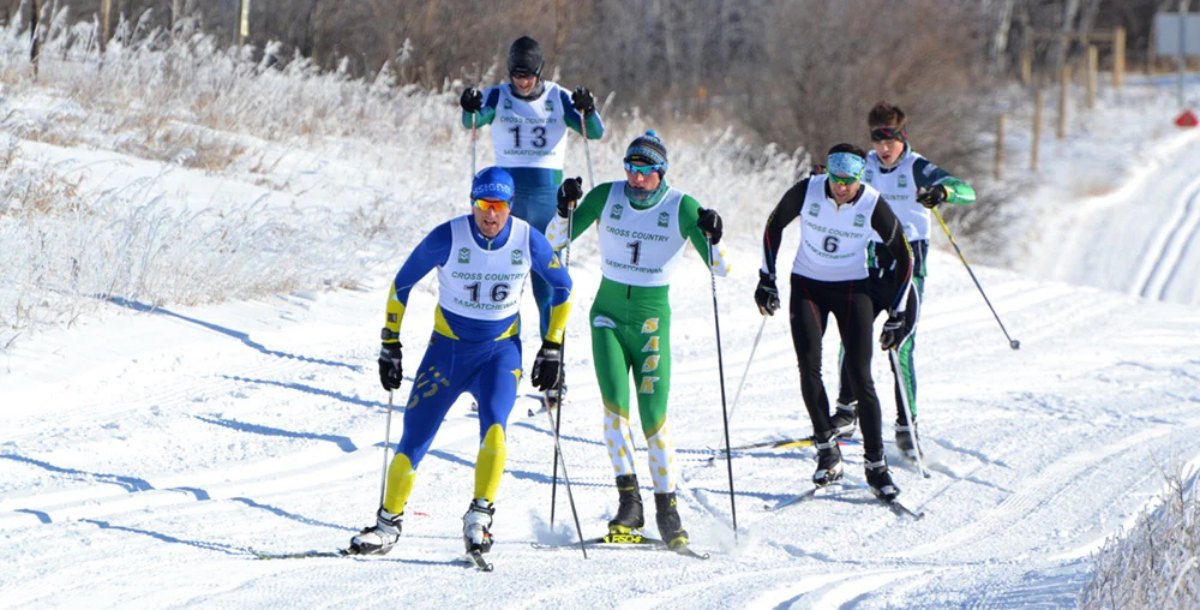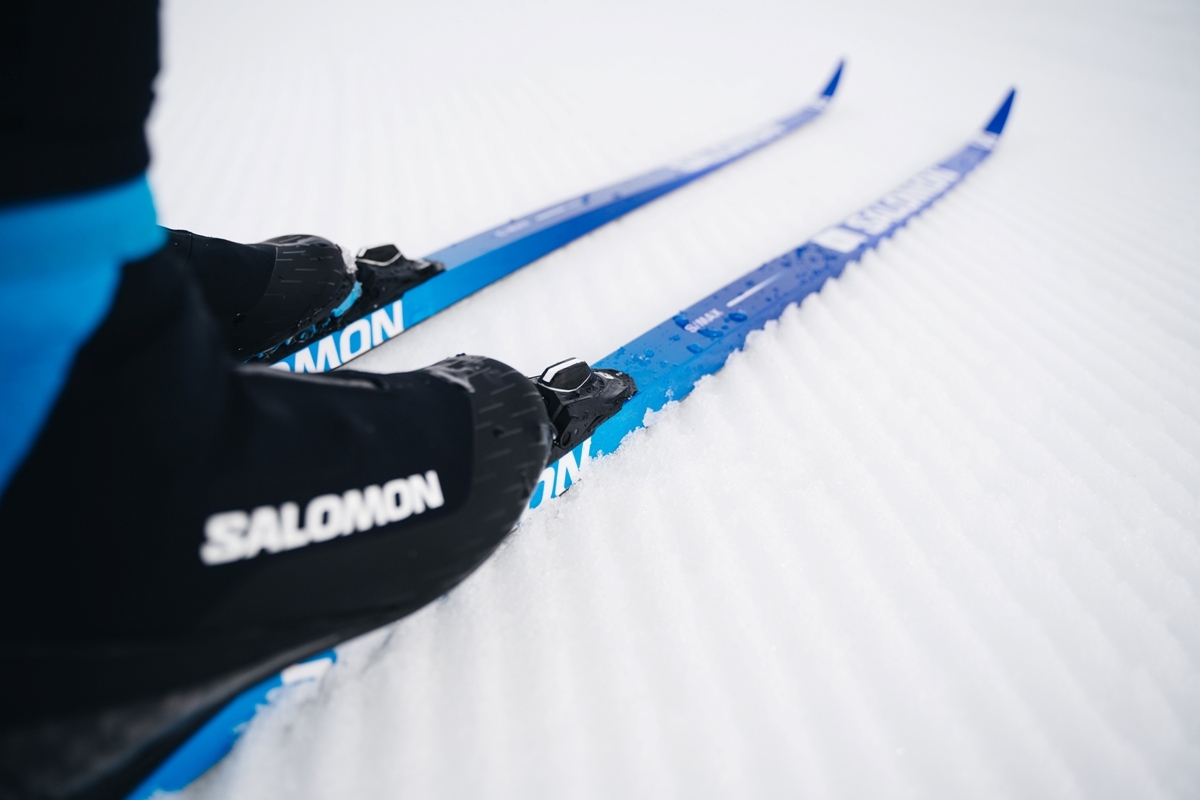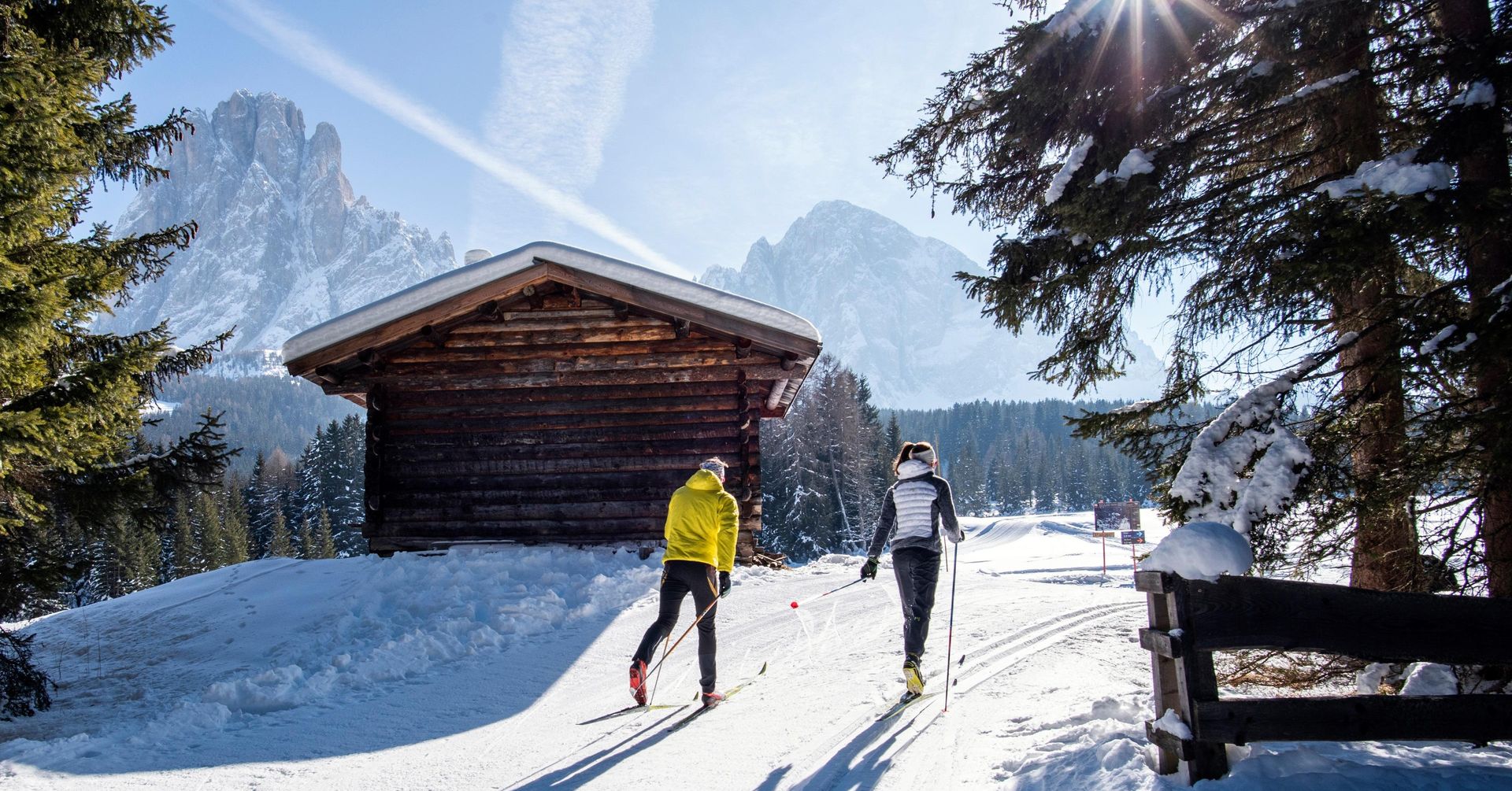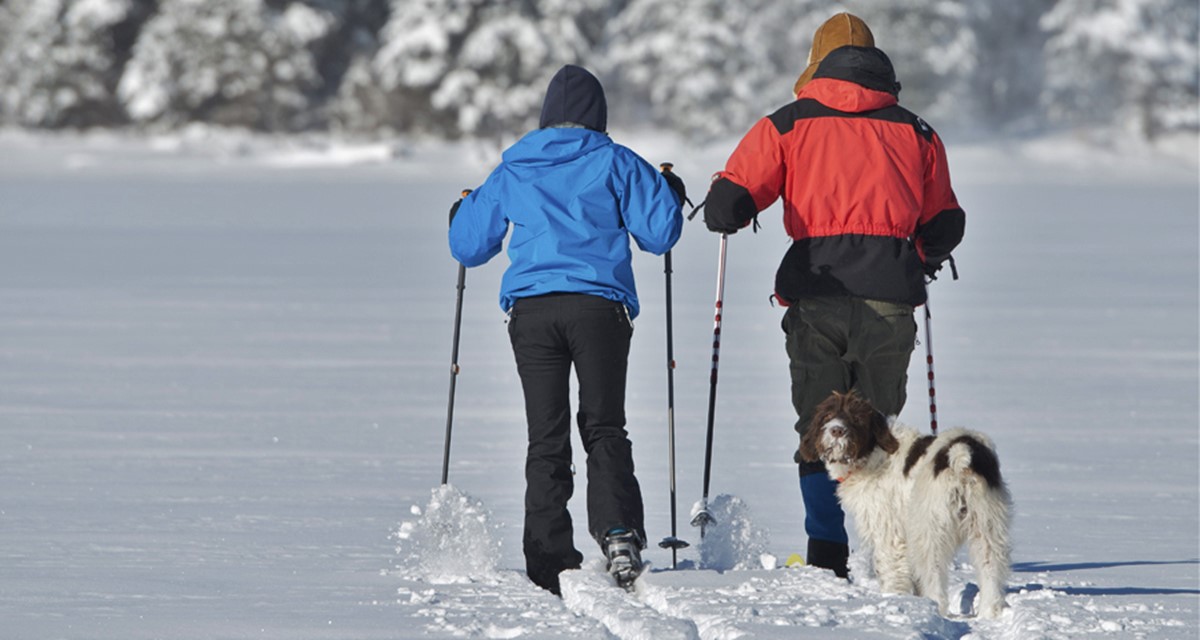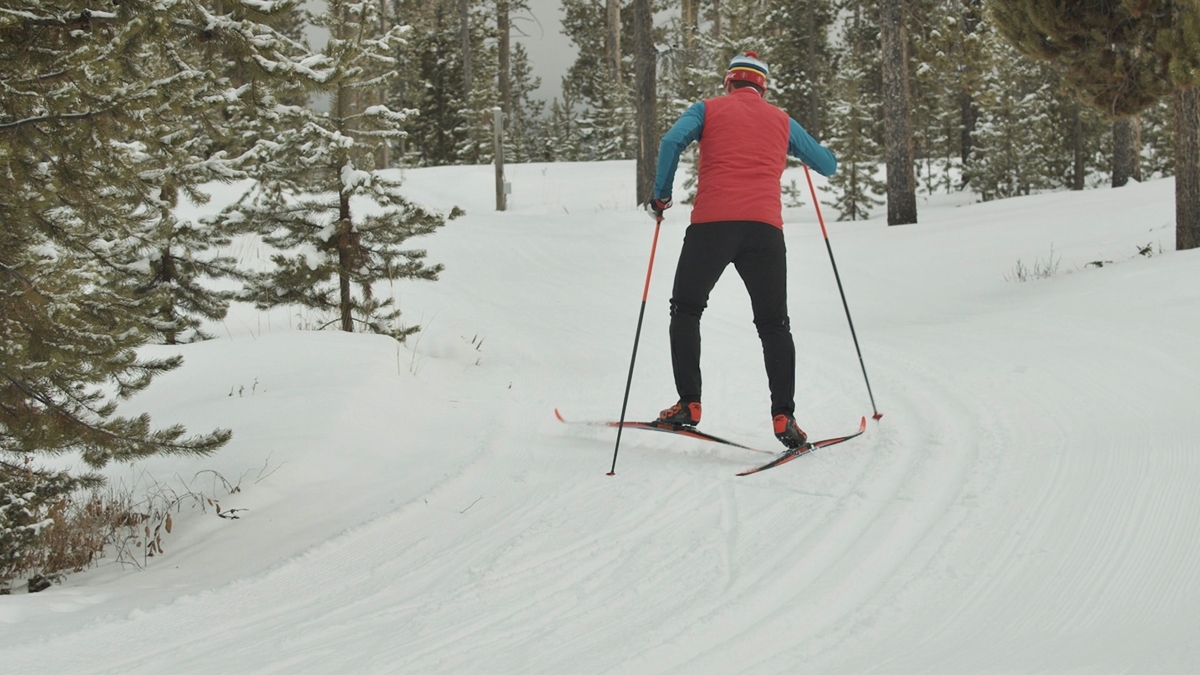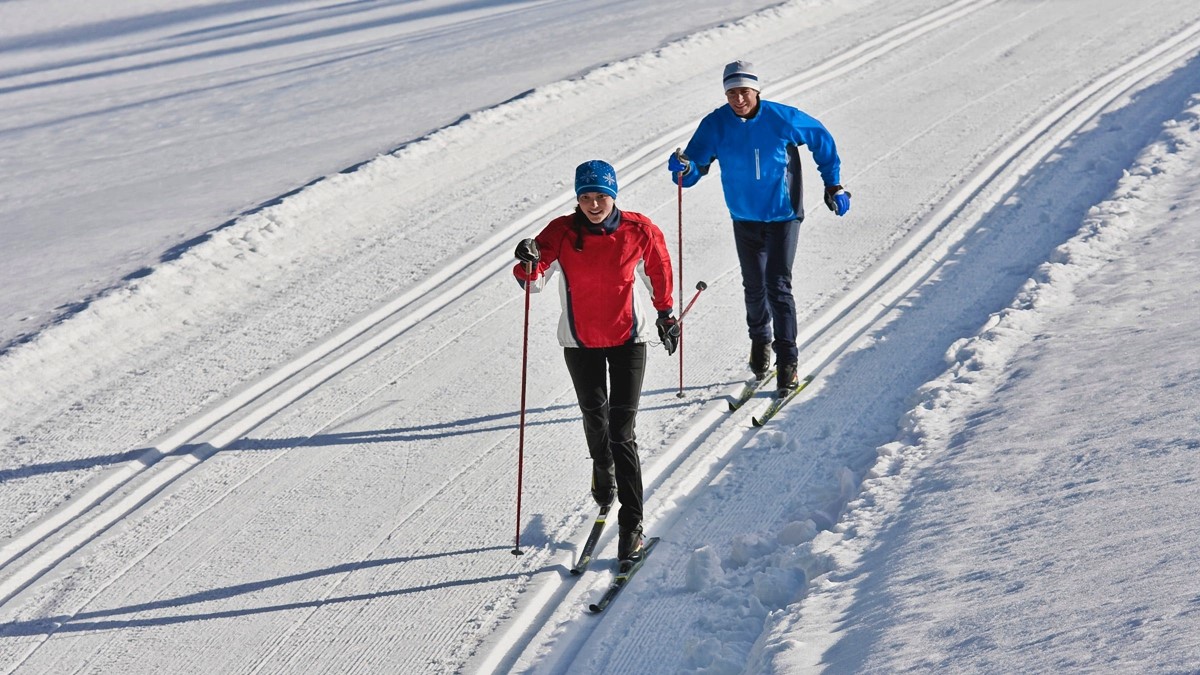

Featured
How To Cross Country Classic Ski
Modified: January 2, 2024
Discover the featured techniques and tips for mastering the cross country classic ski, from equipment selection to proper form and technique. Become a pro on the trails today!
Introduction
Are you ready to embark on an exhilarating winter adventure? Cross-country classic skiing might just be the activity for you! This timeless winter sport allows you to glide gracefully through snowy landscapes, immersing yourself in the beauty of nature while enjoying a full-body workout.
Unlike its more fast-paced variant, the skate skiing, cross-country classic skiing focuses on a more relaxed and rhythmic stride. It’s perfect for those seeking a peaceful and serene experience in the great outdoors. Whether you’re a beginner or a seasoned skier looking to expand your repertoire, cross-country classic skiing offers a fantastic opportunity to explore pristine winter trails.
One of the great advantages of cross-country classic skiing is the simplicity of its equipment. You don’t need expensive gear or fancy gadgets to get started. With just a pair of cross-country skis, bindings, boots, and poles, you’ll be ready to hit the snowy trails. However, it’s essential to choose the right equipment that suits your skill level, terrain, and personal preferences.
Before embarking on your cross-country classic skiing adventure, it’s crucial to prepare both physically and mentally. Conditioning your body for the demands of skiing will help prevent injuries and enhance your overall experience on the trails. Engaging in strength and endurance training, as well as improving flexibility, will pay off when you’re gliding effortlessly through the winter wonderland.
Mastering the proper technique is also vital for an enjoyable cross-country classic skiing experience. Understanding how to engage your muscles, maintain balance, and coordinate your movements will greatly impact your performance on the trails. With practice and proper form, you’ll be able to glide efficiently across the snow, conserving energy while maximizing speed and control.
As with any sport, there are common mistakes that beginner skiers tend to make. Being aware of these pitfalls will help you avoid frustration and ensure a smoother learning curve. From improper weight distribution to incorrect pole placement, understanding these mistakes will allow you to correct them before they become ingrained habits.
Your safety is of utmost importance while partaking in cross-country classic skiing. Familiarizing yourself with safety tips, such as dressing in layers, wearing the appropriate gear, and being aware of weather conditions, will help you minimize risks and enjoy your time on the trails. Additionally, understanding common skiing etiquette and respecting the environment will contribute to a positive skiing experience for yourself and others.
To make the most of your cross-country classic skiing journey, it’s helpful to familiarize yourself with common skiing terms. From kick wax to diagonal stride, understanding these terms will allow you to communicate more effectively with fellow skiers and enhance your overall understanding of the sport.
Now that you have a brief introduction to cross-country classic skiing, it’s time to delve deeper into the different aspects of this exciting winter activity. From choosing the right equipment to mastering the technique, we’ll guide you every step of the way, helping you become a confident and skilled cross-country classic skier. So, grab your skis, bundle up, and get ready to embark on an unforgettable adventure in the snow!
Choosing the Right Equipment
When it comes to cross-country classic skiing, selecting the right equipment is essential for a comfortable and enjoyable experience on the trails. With a wide range of options available, it can be overwhelming for beginners to know where to start. Here are some key considerations to keep in mind when choosing your cross-country classic skiing gear:
- Ski Length: The length of your skis is determined by your weight and skill level. Generally, longer skis offer better stability and glide, while shorter skis are more maneuverable. Consult a sizing chart or seek advice from professionals to ensure you select the appropriate ski length.
- Bindings: Bindings play a crucial role in connecting your boots to the skis and allowing for efficient power transfer. There are two main types of bindings for cross-country classic skiing: NNN (New Nordic Norm) and SNS (Salomon Nordic System). Ensure that your boots and bindings are compatible for a secure and comfortable fit.
- Boots: Cross-country ski boots provide warmth, support, and responsiveness. They should fit snugly but not be too tight or restrictive. Look for boots with proper insulation, ankle support, and a comfortable fit. It’s also important to consider the compatibility of your boots with the bindings you choose.
- Poles: Poles are used to enhance balance, propulsion, and rhythm while skiing. They should be lightweight, durable, and correctly sized. A good rule of thumb for pole sizing is to multiply your height in centimeters by 0.85. However, it’s best to consult a professional to ensure the optimal pole length for your specific needs.
- Kick Wax or Waxless: Traditional cross-country classic skis often require the application of kick wax to the grip zone for traction. This wax needs to be adjusted according to temperature and snow conditions. Alternatively, waxless skis have a textured pattern on the base that provides grip without the need for wax. Consider your preference, skill level, and the maintenance required when choosing between kick wax and waxless skis.
While investing in high-quality equipment is important, it’s also essential to consider your budget and skiing goals. If you’re just starting, renting equipment or purchasing used gear can be a cost-effective option. As you progress and develop your skills, you can then invest in more advanced equipment that meets your specific needs.
Visiting a reputable ski shop or consulting with experts can provide valuable insights and guidance during the equipment selection process. They can assess your skill level, recommend suitable options, and ensure a proper fit for your boots, bindings, and ski length. Taking the time to choose the right equipment will ultimately enhance your comfort, performance, and overall enjoyment while cross-country classic skiing.
Preparing for Your Cross-Country Classic Ski
Before hitting the trails for your cross-country classic ski adventure, it’s important to take some time to prepare both your body and mind. Proper preparation not only enhances your skiing experience but also reduces the risk of injuries. Here are some key steps to help you get ready for your cross-country classic ski:
- Conditioning: Cross-country skiing requires cardiovascular endurance, leg strength, and core stability. Engage in regular aerobic exercises such as running, cycling, or swimming to improve your cardiovascular fitness. Incorporate strength training exercises like squats, lunges, and planks to build leg and core strength, which helps with balance and stability on the skis.
- Flexibility: Flexibility is crucial in cross-country classic skiing, as it allows for fluid movement and prevents muscle strains. Perform dynamic stretches that mimic the movements involved in skiing, focusing on the hip flexors, quadriceps, hamstrings, and calves. Hold each stretch for 15-30 seconds, and avoid bouncing or forcing the stretch.
- Proper Clothing: Dressing in layers is key when cross-country skiing, as it allows you to adjust your body temperature according to the weather conditions and your exertion level. Start with a moisture-wicking base layer to keep you dry, add insulating layers for warmth, and finish with a windproof and waterproof outer layer. Don’t forget to wear a hat, gloves, and warm socks to protect your extremities.
- Hydration and Nutrition: Staying hydrated and fueled is important during cross-country classic skiing, as it is a physically demanding activity. Drink plenty of fluids before, during, and after your ski to maintain proper hydration. Pack snacks like energy bars, fruits, or nuts to keep your energy levels up during longer outings. Avoid heavy meals right before skiing to prevent discomfort on the trails.
- Trail Conditions: Before heading out, check the trail conditions to ensure they are suitable for skiing. Some trails may require grooming or have specific requirements based on the snow conditions. Websites, ski clubs, or local visitor centers can provide up-to-date information on trail conditions, ensuring a safe and enjoyable skiing experience.
- Safety Gear: Always carry a basic safety kit that includes a map, compass, whistle, and a small first aid kit. It’s also a good idea to bring a cell phone and let someone know your skiing plans, especially if you’re skiing alone. Be aware of your surroundings, follow trail signs and markers, and adhere to any avalanche warnings or advisories for your area.
- Technique Review: Take some time to review the proper cross-country classic skiing technique. Familiarize yourself with the basic movements, such as kick and glide, diagonal stride, and snowplow. Practice these techniques on flat terrain before tackling more challenging trails. Consider taking lessons or skiing with experienced friends to improve your technique and gain confidence on the skis.
By following these preparation steps, you’ll be well-equipped physically and mentally for your cross-country classic skiing adventure. Remember to bring a positive attitude, embrace the beauty of nature, and enjoy the peaceful serenity that cross-country skiing offers. Whether you’re a beginner or a seasoned skier, the anticipation of gliding through the snow-covered landscapes is sure to make for an unforgettable experience!
Proper Technique for Cross-Country Classic Skiing
To enjoy a smooth and efficient cross-country classic skiing experience, mastering the proper technique is essential. Understanding the fundamental movements and body positioning will not only improve your performance but also conserve energy and prevent injuries. Here are key elements of the proper technique for cross-country classic skiing:
- Diagonal Stride: The diagonal stride is the basic movement in cross-country classic skiing. Begin by pushing off with one ski while simultaneously planting the opposite pole. As you transfer your weight onto the other ski, push off with that ski and plant the opposite pole. Maintain a rhythmic motion, allowing for smooth gliding and continuous forward momentum.
- Glide: The glide is a vital component of efficient skiing. As you extend your leg forward and kick off with the other foot, focus on extending your stride and maximizing the distance covered with each glide. Aim for a fluid motion, minimizing any upward or sideways movement, and allowing the skis to glide effortlessly across the snow.
- Balance and Weight Shift: Maintaining a proper balance and weight shift is crucial for stability and control. Keep your weight evenly distributed between both skis and shift your weight forward as you kick off with each stride. Maintain a slight forward lean from the ankles, engaging your core muscles to stabilize your body. Avoid leaning back, as this can lead to loss of control and hinder your forward movement.
- Pole Placement: Proper pole usage enhances your skiing technique. Plant each pole firmly into the snow at the same time as the opposite foot glides forward. Aim for a 45-degree angle between the pole and the snow, with your elbow forming a 90-degree angle. Pushing off with the pole helps propel you forward and maintain balance.
- Grip and Kick: To achieve a good grip and kick, transfer your weight onto the kicking ski as it is placed on the snow. Press down through the heel of the kicking foot, allowing the grip zones of the skis to engage with the snow. Use your leg muscles to generate power and propulsion, driving your pelvis forward with each kick.
- Uphill Technique: When skiing uphill, it’s essential to adapt your technique to maintain momentum. Shorten your stride and increase the tempo to conserve energy. Focus on lifting your knees slightly higher and engaging your leg muscles more forcefully when kicking off. Use your poles to push yourself up the hill, planting them deeply into the snow for added stability.
- Downhill Technique: In downhill sections, focus on maintaining a controlled and relaxed stance. Lean slightly forward, keeping your weight centered over the skis. Widen your stance for stability and use your poles to help with balance and control. Practice shifting your weight as needed to maintain control and prevent excessive speed.
It’s important to remember that mastering the technique takes time and practice. Start with gentle terrain and gradually progress to more challenging trails as your skills improve. Consider taking lessons from a qualified instructor or skiing with more experienced friends to refine your technique and receive feedback.
By developing proper technique, you’ll be able to ski efficiently, conserve energy, and enjoy a more enjoyable and rewarding cross-country classic skiing experience. So, get out on the trails, embrace the beauty of winter, and let your skis glide you through the snowy landscapes with confidence and grace!
Common Mistakes to Avoid
While learning cross-country classic skiing, it’s common to make some mistakes along the way. Awareness of these mistakes can help you identify and correct them, leading to a smoother and more enjoyable skiing experience. Here are some common mistakes to avoid:
- Leaning Back: One of the most frequent mistakes beginner skiers make is leaning back, shifting the weight onto the heels. This hinders forward movement and balance, making it difficult to execute proper technique. Instead, focus on maintaining a slight forward lean from the ankles, engaging core muscles for stability.
- Poor Weight Distribution: Balancing your weight properly between both skis is crucial for stability and control. Beginners often put too much weight on one ski, causing imbalance and difficulty in executing the diagonal stride. Practice shifting your weight evenly between both skis with each stride, allowing for smoother gliding and improved technique.
- Incorrect Pole Placement: Placing the poles too far back or too far forward can disrupt your rhythm and hinder balance. Aim for a 45-degree angle between the pole and the snow, with the elbow forming a 90-degree angle. Plant the pole firmly into the snow as the opposite foot glides forward, using the poles to help propel you forward and maintain balance.
- Overstriding: Overstriding, or taking steps that are too long, can lead to imbalances and excessive strain on the muscles. Focus on taking shorter, controlled strides, allowing for a smoother and more efficient glide. Remember to kick from the gliding ski and maintain a rhythmic motion to conserve energy and prevent fatigue.
- Neglecting to Wax: For skis that require kick wax, neglecting to apply or adjust the wax according to the snow conditions can impact your grip and kick. Consult waxing guides or ask a professional for advice on choosing the appropriate wax and applying it correctly. Regularly check and adjust the wax throughout your skiing session to optimize performance.
- Skipping Warm-Up: Failing to properly warm up before skiing can increase the risk of injury and hinder your performance. Dedicate time to warm up your muscles, focusing on dynamic stretches that mimic the movements involved in skiing. Engage in light aerobic activity to increase heart rate and blood flow, preparing your body for the demands of cross-country classic skiing.
As you progress in your cross-country classic skiing journey, be mindful of these common mistakes. Take the time to analyze your technique, seek feedback from experienced skiers, and practice regularly to improve your skills. With patience and perseverance, you’ll be able to overcome these challenges and enjoy the pure pleasure of gliding effortlessly through the winter landscapes.
Safety Tips for Cross-Country Classic Skiing
Cross-country classic skiing is a fantastic way to enjoy the winter outdoors, but it’s important to prioritize safety during your skiing adventures. By following these safety tips, you can minimize risks and ensure a safe and enjoyable experience on the trails:
- Dress Appropriately: Dress in layers to regulate your body temperature and protect yourself from the elements. Wear moisture-wicking base layers, insulating mid-layers, and a windproof and waterproof outer layer. Don’t forget to wear a hat, gloves, and warm socks to protect your extremities.
- Check Trail Conditions: Before heading out, check the trail conditions to ensure they are safe and suitable for skiing. Be aware of any hazards, such as ice patches or tree branches, and adjust your route accordingly. Stay informed about weather changes and any trail closures or warnings in your area.
- Stay Hydrated: Even in colder temperatures, it’s essential to stay hydrated. Carry a water bottle with you and take regular sips throughout your skiing session. Dehydration can still occur in winter due to exertion and dry air, so make hydration a priority.
- Be Mindful of Wildlife: Respect the natural wildlife and refrain from disturbing their habitats. Avoid skiing off designated trails to minimize your impact on the environment. Keep a safe distance from any animals you may encounter and avoid feeding or approaching them.
- Use Proper Equipment: Ensure that your equipment is in good condition and appropriate for the terrain and weather conditions. Inspect your skis, bindings, boots, and poles before each outing to ensure they are secure and functioning correctly. Consider taking lessons or seeking professional guidance to ensure proper technique and fitting of your equipment.
- Know Your Limits: Ski within your skill level and gradually progress to more challenging trails as you gain experience. Be honest with yourself about your abilities and avoid pushing beyond your comfort zone. If you’re skiing with a group, communicate openly about your abilities and stay together to ensure everyone’s safety.
- Carry Safety Equipment: Pack a safety kit that includes a map, compass, whistle, small first aid kit, and a cell phone. Inform someone of your skiing plans and expected return time, especially if you’re skiing alone. Familiarize yourself with the emergency procedures in your skiing area and follow any avalanche warnings or advisories.
- Practice Proper Trail Etiquette: Respect other skiers on the trails by practicing good trail etiquette. Ski on the right side of the trail, yield to faster skiers, and announce your presence when passing. Avoid stopping in the middle of the trail to ensure a smooth flow of traffic and prevent collisions.
- Listen to Your Body: Pay attention to any signs of fatigue or discomfort during your skiing session. Take breaks when needed and listen to your body’s signals. Pushing through pain or exhaustion can lead to injuries, so prioritize rest and recovery to maintain your overall well-being.
By implementing these safety tips, you can ski with confidence, knowing that you’ve taken precautions to protect yourself and others. Remember to always be aware of your surroundings, use common sense, and respect the natural environment. Following these safety guidelines will contribute to a positive and safe cross-country classic skiing experience.
Common Cross-Country Classic Skiing Terms
As with any sport, cross-country classic skiing comes with its own set of terminology. Understanding these common skiing terms will not only help you communicate effectively with other skiers but also enhance your understanding and appreciation of the sport. Here are some essential cross-country classic skiing terms you should know:
- Diagonal Stride: The basic technique used in cross-country skiing, involving a forward and diagonal push of the skis and alternating poles.
- Kick Wax: A sticky wax applied to the grip zone of traditional cross-country classic skis to provide traction on the snow.
- Waxless Skis: Skis with a textured pattern in the grip zone that provides grip without the need for kick wax.
- Glide: The smooth movement achieved when skiing, where the skis glide effortlessly over the snow.
- Poles: The long sticks with handles used for balance, push-off, and propulsion while skiing.
- Stride: The motion of extending and pushing off with one leg while gliding on the opposite ski.
- Herringbone: A technique used for climbing uphill, where skis are angled outwards to form a V-shape, similar to the pattern on a herringbone fish.
- Snowplow: A technique used for braking and reducing speed, where the tips of the skis are pushed outward and the tails are brought together.
- Groomed Trails: Trails that have been compacted and smoothed to provide an optimal surface for skiing, usually maintained by ski resorts or clubs.
- Kick Zone: The section of the ski base under the foot, characterized by a different texture or wax, providing grip and kick during each stride.
- Kilometer Marker: Markers placed along the trail to indicate the distance traveled, typically measured in kilometers.
- Skate Lane: Separate lanes or tracks set aside for skate skiing, a different technique that allows for faster and more dynamic movements.
- Waxing Bench: A specialized table or bench used for waxing skis, with clamps or supports to secure the skis during the waxing process.
- Ski Trails: Designated paths or routes specifically groomed for cross-country skiing, varying in difficulty and terrain.
- Camber: The slight upward curve in the middle of the ski, which helps with weight distribution and provides better contact with the snow.
By familiarizing yourself with these common cross-country classic skiing terms, you’ll be able to communicate effectively with fellow skiers and gain a deeper understanding of the sport. As you continue to explore the world of cross-country skiing, you’ll come across additional terms and techniques that will further enhance your skiing knowledge and skills. So, hit the trails with confidence, armed with the language and expertise to fully enjoy the beauty of cross-country classic skiing!
Conclusion
Cross-country classic skiing offers a remarkable opportunity to connect with nature, challenge your body, and embrace the beauty of winter. By choosing the right equipment, preparing properly, and mastering the technique, you’ll be well on your way to enjoying this exhilarating winter activity.
Remember to select skis, bindings, boots, and poles that suit your skill level and terrain. Take the time to condition your body, improve flexibility, and dress appropriately for your skiing adventure. Focus on mastering proper technique, avoiding common mistakes, and prioritizing safety on the trails.
Engaging in cross-country classic skiing not only provides an excellent physical workout but also grants you the opportunity to explore stunning winter landscapes and appreciate the tranquility of the great outdoors. So, venture out and experience the invigorating feeling of gliding through snow-covered trails, surrounded by the serenity of nature.
As you embark on your cross-country classic skiing journey, continue to expand your knowledge by familiarizing yourself with common skiing terms and techniques. Respect trail etiquette, stay hydrated, and be mindful of your surroundings and wildlife. Always prioritize safety and carry necessary safety equipment.
Cross-country classic skiing is a sport that can be enjoyed by individuals of all ages and skill levels, from beginners to seasoned skiers. Embrace the learning curve, seek guidance from professionals or experienced skiers, and don’t be afraid to venture outside of your comfort zone.
Finally, relish the adventure that cross-country classic skiing provides. Cherish the moments of tranquility, the rush of gliding effortlessly across the snow, and the sense of accomplishment as you conquer new trails.
So, gather your equipment, lace up your boots, and embark on a cross-country classic skiing journey that will leave you with lasting memories and a deep love for the winter wonderland.
